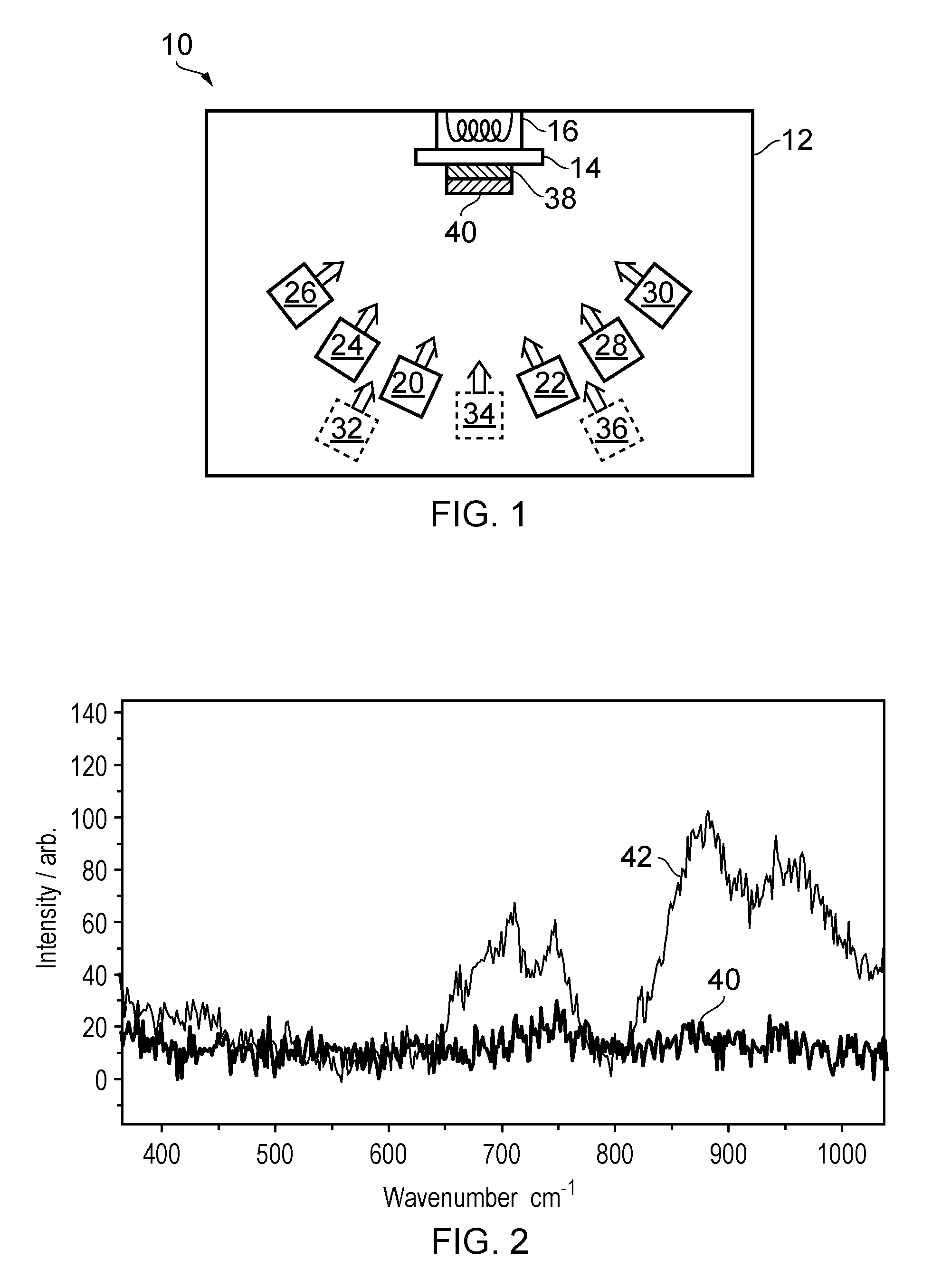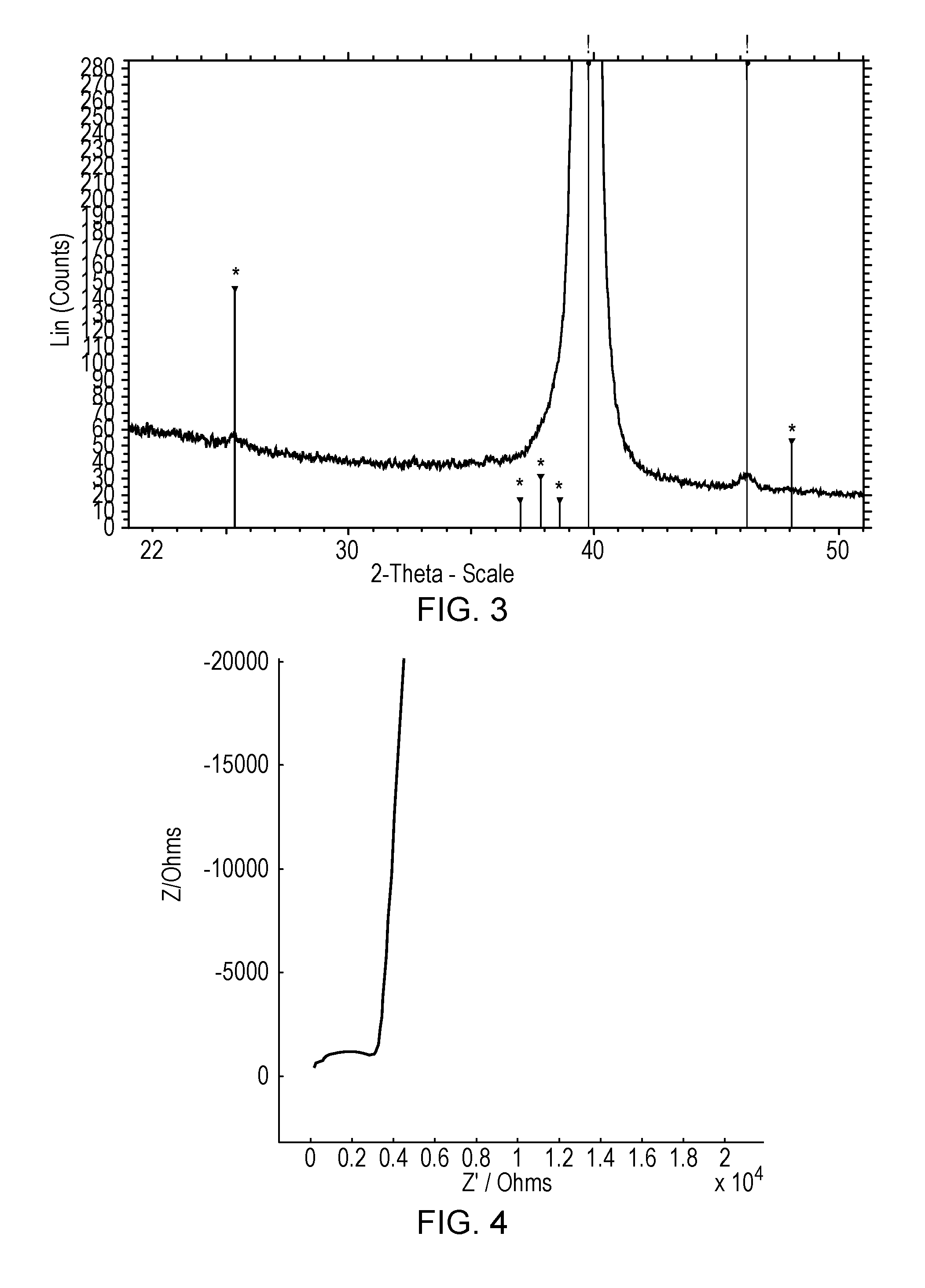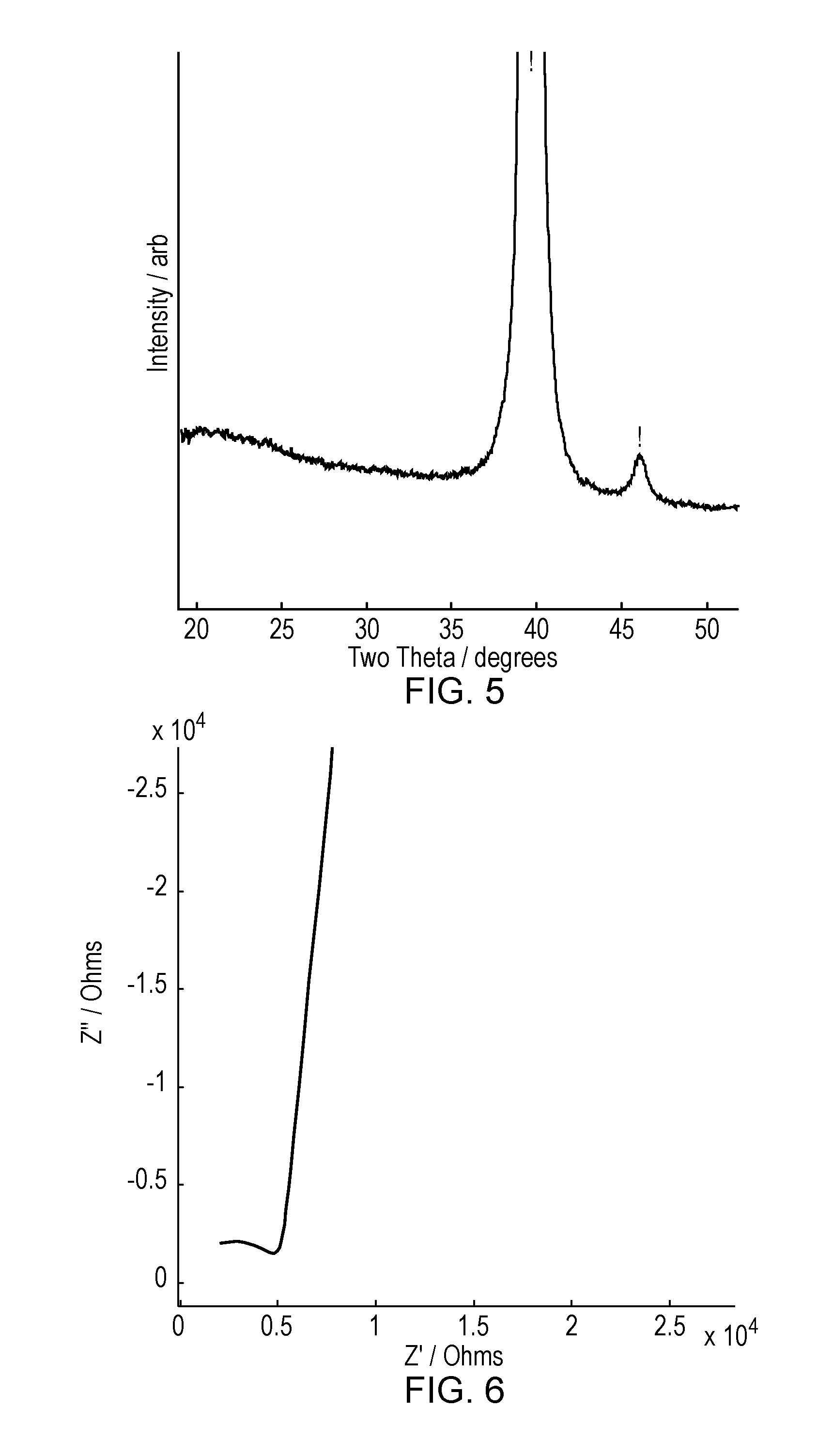The structure of these batteries places additional burdens on the deposition processes of the individual components, since the fabrication of a particular layer should not have a detrimental effect on any
layers already deposited.
The manufacture of
solid state batteries poses a range of challenges.
However, depositing a quality crystalline
cathode layer in a way which is compatible with subsequent steps in the manufacturing and
processing of the complete battery is often problematic.
Electrolyte materials are often preferred or required to be amorphous, and further challenges have been the identification of
solid electrolytes with sufficiently high
ionic conductivity, low
electronic conductivity, and low mechanical stress resulting from the required electrochemical
cycling and reproducible high yield production methods.
Sputtering can be disadvantageous in that it is difficult to predict the effect of the various
sputtering parameters on the characteristics and performance of the deposited material.
Hence, it can be very difficult to alter the individual parameters of the sputtered film (for example, concentration of a
single element,
deposition rate or
crystallinity) without affecting other properties of the film.
This results in difficulties in achieving a composition of interest, which makes optimisation of the film and therefore of the properties of any intended battery or other thin film device extremely problematic.
In addition, this
route often yields very rough samples, which is also a problem with
sputtering.
Surface roughness is highly undesirable in layered thin film structures such as a
solid state battery, where any large protruding features could extend well into, or even through, an adjacent layer.
However, problems such as variation in composition between source and
resultant thin film are common to all routes which begin with compound
evaporation targets (including
sputtering and PLD).
Furthermore it has been noted that a relationship between substrate temperature and the composition of the deposited film exists once again resulting in difficulties in optimising material performance due to a
confounding of parameters.
An alternative is thermal
evaporation directly from the elements, but this is uncommon.
However, a complexity in this process is the use of a cracker to break down phosphorous so as to enable the formation of phosphates.
Although this work demonstrates two of the three basic building blocks for producing a thin film
cell, it does not demonstrate an operational
cell.
Furthermore, the ionic conductivities demonstrated in this work are too low to enable a
cell to function correctly at
room temperature.
Cathodes deposited at low substrate temperatures (below 250° C.) are often insufficiently crystalline, resulting in reduced performance.
Therefore, a further crystallisation step is required; this is typically achieved by a post-deposition, high temperature anneal, although this step can result in a lithium deficiency in the film (Singh et al. J. Power Sources 97-98 (2001), 826-831).
Loss of lithium is more significant at higher temperatures, and there is the possibility of cross
contamination due to
diffusion of materials between the deposited film and the substrate, which limits the possible substrates available for use.
The temperature required will depend on the material, but is typically at least 500° C. and may be significantly higher, and the resulting crystalline layer may be of
poor quality.
Also, annealing is an undesirable complexity, and is particularly problematic in the manufacture of a complete battery or other layered device.
This step requires both time and energy to provide sufficient crystallisation.
Additionally such a process prevents the deposition of an additional cell onto an existing one to produce a stack of cells, since any amorphous
electrolyte already deposited must also be annealed, causing crystallisation.
However, the
ion beam is a complicating aspect of the process.
However, these materials present problems when applied to battery systems.
The sulphide systems, such as Li10GeP2S12, present extremely high conductivities but are prone to
decomposition when exposed to air and water, causing the release of toxic H2S and a deterioration in performance.
Furthermore, both
oxide and sulphide crystalline electrolytes require extremely high
processing temperatures.
For these reasons crystalline electrolytes have not been utilised in commercial thin film battery systems.
However, the amorphous LiPON will crystallise at temperatures lower than those typically needed to anneal
cathode materials such as LMO (LiMn2O4,
lithium manganese oxide) and LMNO (LiMn1.5Ni0.5O4, lithium
manganese nickel oxide) using standard synthesis techniques, thereby complicating the manufacture of a thin film battery comprising these materials.
This synthetic method gives rise to irregular ‘splats’ of glass, which are not suitable for processing into thin film batteries.
Synthesis by sputtering of similar compositions has been attempted in thin films, but these were not successful, resulting in materials with significantly reduced conductivities when compared to the rapidly quenched glass (Machida, N.; Tatsumisago, M.; Minami, T., Preparation of amorphous films in the systems Li2O2 and Li2O—B2O3-SiO2 by RF-sputtering and their
ionic conductivity.
However, it has been found that following the method described for phosphates while using the constituent elements of lithium borosilicate does not produce the desired thin
film material.
Deposition of lithium borosilicate utilising
molecular oxygen at elevated temperatures results in the formation of crystalline LiPt7 when deposited onto
platinum substrates, an unwanted phase.
Also, the resulting amorphous lithium borosilicate will crystallise when subjected to the elevated temperatures required for producing and processing other components of a battery, or if the battery is for use at high temperature, thereby destroying its electrolyte qualities.
The efforts required to overcome these many difficulties in the various deposition processes and the complexities involved in developing
new materials mean that the vast majority of thin film batteries are limited to using LiPON as an electrolyte, deposited as a thin film by sputtering.
 Login to View More
Login to View More 


